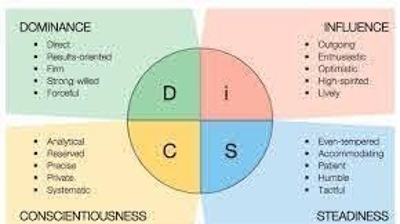40% of the skills you learn now will not be relevant in five years, which means your skills need to be upgrading continually.
Virtual training programs are now and forever will be the new norm. As a leader, it is super important that you embrace the changes that are happening.
The idea of a virtual training program may have never entered your mind before the pandemic. You may not need one right now. But that could change at any time.
On some level, we're lucky. Being forced into online learning has allowed leaders to make more changes in months than they could have in years if there were no pandemic.
Remember that all crisis is temporary. The market always bounces back. Sometimes it's hard to remember when you're still in the eye of the storm.
During any crisis, there are three phases of dramatic disruption: before, during, and after. It will help immensely if you consistently ask yourself
- What is the new normal?
- How can I train my team for it?
- How do I prepare myself for it?
You may have never heard this, but education and training are different. For example, going to school or buying an online course is education. You're learning something new. Training is teaching people a specific set of behaviors to enhance the skills they already have.
The first thing you need to understand before you implement a virtual training program is the learning process
- Awareness
- Knowledge
- Skill
- Mastery
Next, here are five essential components of any virtual training
- Sponsored –What is the goal? Which senior member of the company is sponsoring it? What is the KPI? How and when will it get measured. For example, some companies Sandler has helped set-up virtual training take the attitude: "We're not here to do training, we're here because our last three launches failed and we can't afford a fourth." The sponsor tells the trainees the goal. The training helps them get there.
- Participative – One-way communication is not training. It would be best if you planned on the participants engaging with the facilitator and each other. By the way, never teach anybody anything they can learn on their own.
- Implemented – If you don't do it, there is no point in learning it. The first time you do something, you're usually not very good at it. Make sure you push your team outside of their comfort zone. Otherwise, you just wasted time and money you'll never get back.
- Archived – For example. All of Sandler's webinars, podcasts, and white papers get archived on our website.
- Deliverable – You need something you can deliver to the sponsor of the training as a way to say: "Here's what we did, this is what we accomplished." That is the reason having a KPI is so crucial. Owners and leaders need to know they're getting a positive ROI.
Finally, here how the process of implementing virtual training sessions should look
- Kick-off Call –The sponsor gives a short presentation on why the training is happening and the goals/KPIs. Then they hand it off to the facilitator(s).
- Pre-work and Briefing –You give trainees the base level of information about the training and behaviors getting learned. This phase is usually either or a combination of pre-recorded video, live interactive training, and homework.
- Team Call 1 – Now, things get serious. You dive into the nuts and bolts and give people homework that gets them on track to implement the training.
- Implementation –The trainees implement what they learned into their daily routine.
- Review – The team gets together with the facilitators, discusses their successes and failures, and best practices implementing the training moving forward.
- Implementation 2 – Trainees move through the same process as Implementation, except with new best-practices and tasks they learned during the review.
- Review 2 – Almost the same process as the first review.
- Evaluation –You evaluate how everybody did individually and overall as a team and how you can do better next time you offer virtual training.
Enter your information below to get a free sample chapter of Sandler's Rules for Sales Leaders. You won't get bombarded with constant, high-pressure follow-ups, just the literature for which you asked.





